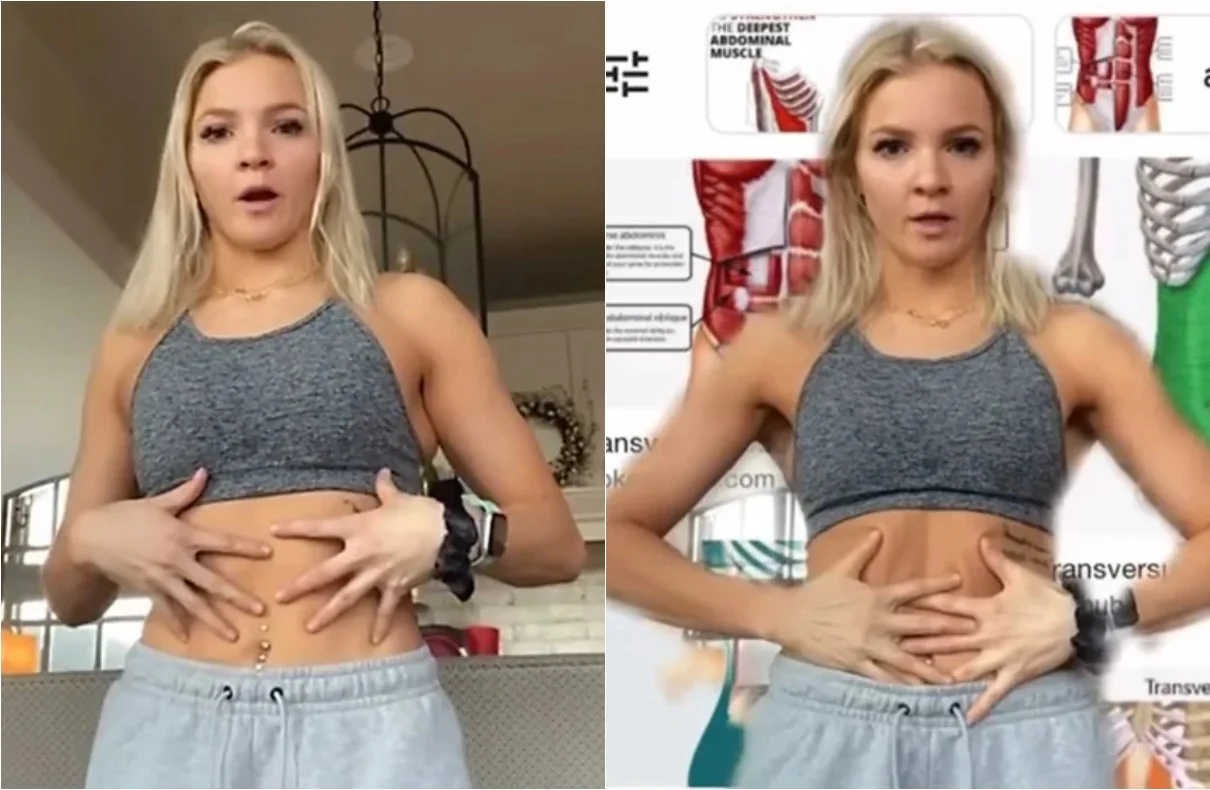The hashtag #stomachvacuum has over 100 million views on TikTok, but what can be achieved with a stomach vacuum? Are there any safety risks? Does it really work?
The stomach vacuum is not a plastic surgery trend, but rather an abdominal workout. TikTok fitness trends should always be scrutinized outside of the social media app, which is why we interviewed three experts to find out everything you need to know about the stomach vacuum trend.
The stomach vacuum is a strengthening movement that targets the abdominal muscles, specifically the transverse abdominis. “It’s like a bicep curl exercise for your abs,” says Jordan D. Metzl, MD, a sports medicine physician at the Hospital for Special Surgery and author of The Workout Prescription.
Katie Wang, a personal trainer and founding instructor at Peloton Row, told TODAY that it’s nothing new. “They’ve always been the trend,” Wang says, explaining that most people probably do it without realizing it.
“Every time [yoga and Pilates instructors] say, ‘belly button to spine,’ it’s a version of the stomach vacuum,” Wang explains. There are no major risks in doing the isometric strength movement. However, if you have high blood pressure, Wang warns against doing the ‘stomach vacuum’ because it can cause a spike in blood pressure.
It’s not dangerous, he says, but he warns people not to do it right away and suggests practicing the move before doing the “stomach vacuum” for a long period of time. The biggest risk is what you can’t see: misinformation and images on TikTok that can affect your mental health.
Some people claim the ‘stomach vacuum’ slims the waist and flattens the stomach, but three experts confirmed today that this is greatly exaggerated. “If you don’t pay attention to your diet and everything else, you won’t be able to master the ’empty stomach’ and suddenly have a flat stomach,” Wang explains.
And it’s not just misinformation that can be harmful: The images that appear after searching “empty stomach” on TikTok can be troubling for people who have body image issues or who struggle with eating disorders. Searching “#emptystomach” on TikTok brings up a resource page for the National Eating Disorders Association.
Wang says that if you perform the “stomach vacuum” with the mindset of “losing inches” from your waist, practicing the movement can be “less healthy.”
But as long as you approach the exercise with a healthy mental outlook, Wang says it offers benefits, from helping with posture to strengthening core muscles and deepening your connection with your breath.
Physical therapist and online trainer Jenny Brenneck posts about movement at @drjennypt.
Brenneck recommends exercising first thing in the morning on an empty stomach. Her ‘Empty Stomach’ tutorial guides her followers through this visual demonstration:
1. Start by exhaling all the air from your lungs.
2. Pull your navel toward your spine. Brenneck uses the example of walking into a cool lake or pool to activate your abdominal muscles.
3. Hold your breath for 10 to 15 seconds and then release.
4. Repeat five sets, three or four times a week.
Brenneck says she first learned about isometric abdominal exercises when she was pursuing a doctorate in physical therapy, where they refer to this movement as “hollowing out” or “strengthening.” Brenneck says she teaches her clients the “abdominal vacuum” to help them connect with their bodies on a deeper level, while also providing other rehabilitative benefits.
“It’s a technique that’s used in physical therapy, so it’s safe, it’s effective and there’s a lot of research behind it,” Brenneck said in her video. “It can also help reduce the risk of lower back injury, it can help with posture control and stability within the spine and pelvis, as well as being able to control and strengthen the abdomen on command.”
For Wang, the ‘abdominal vacuum’ is a way to connect more deeply with the body, specifically with breathing and how it can help contract the abdominal muscles.
“When you start to mentally connect to your body during a workout and to your breathing you can achieve a level of fitness. So I think that’s the beauty of this technique,” Wang explains. “It’s breath work, it’s isometric contraction, muscle connection. And as you shape and tone, or ultimately change your body composition, that’s great. But I think the (benefit) to highlight is the strength and the deeper connection and contraction that comes from it.”
However, “holding your breath… always has a disadvantage. That’s why people (who) promote ‘stomach suctions’ often suggest starting with shorter periods of time. But if you start to feel dizzy, you don’t want to do them,” Wang warns.
Brennecke recommends starting with short intervals like 10 seconds and working up to 30 seconds over time.
“Stomach suction” is versatile because it can be done from many positions: standing, lying down, leaning on a surface, in a chair. But when it comes to beginners, Wang suggests starting on the floor and progressing from there. That way, if you get dizzy you’ll already be lying on the floor.
An alternative activity that accomplishes this is the plank. “Planks…really work; I would strongly lean toward them because they strengthen both the front and back delts,” Metzl says.
Wang recommends incorporating the stomach vacuum into a program you’re already doing, focusing on engaging your core and controlling your breath throughout the process. She also suggests a healthy skepticism about social media trends.
“When you see a trend on TikTok, whether it’s the ‘belly vacuum,’ slugging, or your next viral beauty topic, do your research, keep watching, stay curious, listen to as many opinions, stories, and experiences as possible. And then see how it fits into your lifestyle,” says Wang.
